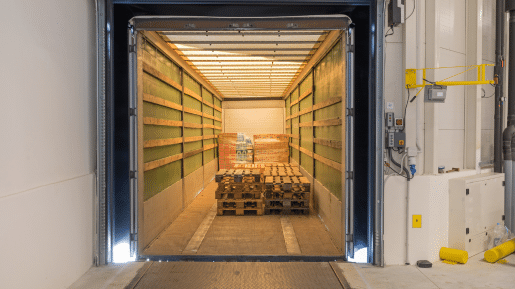Understanding Shared Truckload Shipping
Melton Logistics – 03/06/2025
In today’s fast-paced logistics landscape, businesses need shipping solutions that optimize costs and efficiency. Things like empty trailers and unused space aren’t just a headache anymore – it can have a major impact on your business. It’s essential to reassess how you use capacity and prepare for market shifts leading into 2025. Shared truckload (STL) freight has emerged as a flexible alternative to traditional and less-than-truckload (LTL) shipping.
What is Shared Truckload (STL) Shipping?
Shared truckload (STL), or shared capacity, is a freight shipping method where multiple shippers share space on a singular trailer, transporting goods that don’t require an entire trailer space, but exceed typical LTL constraints.
This is normally accomplished by carriers partnering with a Third-Party Logistics provider (3PL), or by using a digital freight matching technology to match compatible loads, optimizing routes, and minimizing the overall transit times.
Unlike LTL, STL shipments remain on the same truck throughout the journey, reducing handling and transit time.
A Quick Comparison: STL vs. LTL
Handling and Transfers: STL shipments stay on the same truck, minimizing handling risks, whereas LTL freight passes through multiple hubs and consolidation centers.
Freight Size: LTL suits small shipments (one to six pallets), while STL accommodates mid-sized loads that don’t require an entire trailer but may be too large for LTL.

Cost Efficiency: STL offers cost savings without the added handling risks of LTL, making it a middle-ground solution between LTL and FTL.
If you want to learn more about LTL shipping and find out if it’s a good fit for your business, click here to read our article about less-than-truckload shipping.
Pros and Cons of Shared Capacity Freight
Many industries and businesses can leverage STL to improve their supply chain operations, but others may find that it limits their reach. It’s important to consider the pros and cons that it might impose on your business before diving in:
Pros of STL Shipping
• Cost Savings: Shippers only pay for the space they use on the trailer, making STL more practical for those who aren’t running traditional truck loads.
• Reduced Handling: Freight remains on the same truck, reducing the possible damage risks compared to other loads that may need to be transferred.
• Greater Flexibility: STL bridges the gap between LTL and FTL, catering to mid-sized shipments, and gives shippers the ability to move shipments at lower costs without waiting for a full truckload.
Cons of STL Shipping
• Limited Availability: STL services are still expanding and may not be as widely available as LTL and FTL.
• Route Dependency: STL relies on shippers with similar routes, which can affect scheduling.
• Coordination Challenges: Requires precise logistics planning to maximize trailer utilization across the board.
Who Can Benefit from Shared Capacity Freight?
While traditional shipping methods can be made to fit nearly all load problems, Shared Truck Load services tend to fit best with a specific audience.
Ideal Scenarios for STL Shipments
• Freight that exceeds standard LTL limits but doesn’t require a full trailer
• Time-sensitive shipments needing direct routes with fewer stops or delays
• Fragile or high-value cargo requiring minimal handling
• Companies shipping along common routes that can optimize trailer space
Industries That Can Benefit from STL
• Retail: Optimized inventory movement for stores with medium-sized shipments.
• Food & Beverage: Perishable goods benefit from direct transit and fewer touchpoints.
• E-commerce: STL provides cost-efficient and quicker delivery solutions for online retailers.
• Manufacturing: Raw materials and components can move efficiently without unnecessary delays.
Shared truckload (STL) freight is an innovative approach that combines the best aspects of LTL and FTL, making it a game-changing solution for industries looking to optimize their logistics. As demand for flexible and cost-efficient shipping grows, STL is set to play a crucial role in the future of freight transportation. If you’re looking to streamline your supply chain with the experts at Melton Logistics, you can view our shipping services page here.
